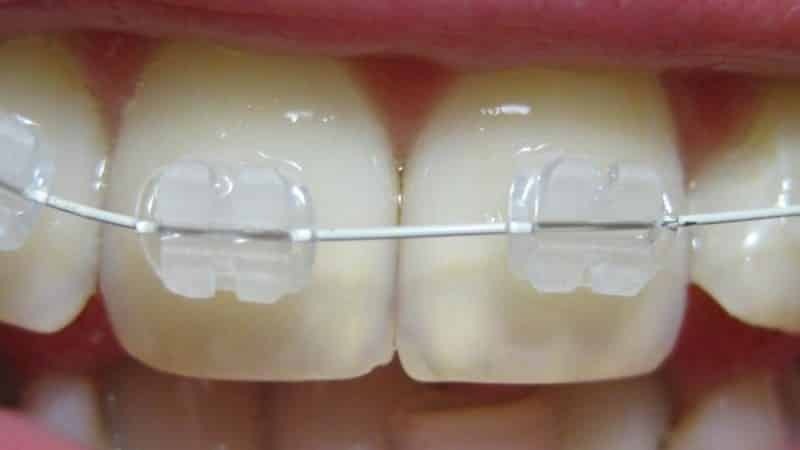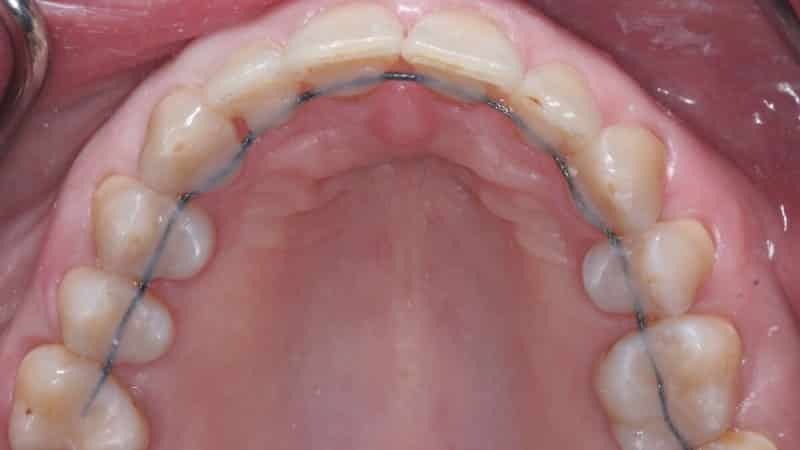Arten von Zähnen beißen beim Menschen
Anomalies of bite in a person develop as a result of a violation of the size or shape of the jaws, as well as the location of the teeth not in their places.From such pathologies, the natural beauty of the smiling mouth and the general shape of the face disappears, and functional deviations arise when talking and chewing solid food, the load on the temporal joint increases and other health complications may arise, so such anomalies must be treated with orthodontics, and do itDelicately enough.Bite anomalies
Bite anomalies can have different types: that is, the upper teeth with the lower teeth can be joined to the most diverse deviations, and the doctors examine them in three different directions( ie, transversal, vertical and sagittal).
The physiological types of bite in a human being are divided into:
- ? ? constant;
- ? ? pathological;
- ? ? physiological.
It is important to understand that any kind of malocclusion can be recognized only if all the milk teeth have already fallen out, and the permanent ones have fully formed, that is, not earlier than 12-15 years.

Species of bite anomalies
Variations of the jaw line pathology
- Sagittal pathology.
Sagittal abnormalities are the types of teeth bites when they are too forward or backward.Examples of such abnormalities can be considered progenic( mesial) or prognathic( distal) jaw series, which differ in the displacement of one of the jaws in a certain direction and thus developed as a mismatch between the interaction of both rows of teeth.
To correct the violation of the occlusion, in this case orthodontists stimulate the growth and development of the deflecting jaw or, on the contrary, delay it.In addition, sometimes the correction of teeth in the area of their closure is applied.Methods of doctors in this case directly depend on the features of the dentoalveolar system of the patient, his age, and also on the severity of the pathology and its effect on vital activity.

Incorrect bite
If a person has developed at this time only a temporary or replaceable bite, then the correction is made using mechanical( replaceable) orthodontic devices or miogymnastics.Adults and children after 12 years can install bracket systems that move teeth in the right direction.If the case is rather complicated, then combined therapies are used, in which surgical intervention is sometimes included.
- Vertical pathology.
The main examples of such pathologies are an open or deep type of occlusion.Such diseases are expressed in the too low or very high position of several teeth relative to the reference plane, as well as when the alveolar lengthening of one tooth is excessive in the event of the removal( cracking) or cracking of its antagonist.
Clinical signs of vertical pathologies in this case may vary depending on the many factors that caused their development, as well as the degree of development of morphological or other disorders and their concentration in a certain part of the row of teeth.
For the treatment of vertical pathologies in children, the etiologic factors of the process are first eliminated, and for adults, non-removable orthodontic devices with a traction of rubber located between the jaws, as well as arcs, guiding crowns and removable mouthguards, are used.
- Transversal pathology
A pathological bite in this direction is a narrowing of one of the dentition rows, as well as a discrepancy in their width or lateral jaw shifts.To the same anomalies is the cross closure, when the teeth can connect, like scissors.

Once the orthodontist finds signs of developing a cross bite, he immediately advises the patient to disengage the dentition.To fix a severely narrowed jaw at any age, plate-shaped spreading devices are used on kappa with screws and springs.Sometimes devices need to be combined with inclined activators or controllers of Frenkel's functions.
Kinds of the correct dentition
Neutral and physiological bites, which are considered the norm in dentistry, ensure the performance of all required functions.However, each of them has its own peculiarities.If desired, each person can independently analyze their shape of the dentition.

Correct bite
The teeth of both jaws normally touch and are located almost opposite their antagonists.Upper jaw slightly protrudes, so that her teeth slightly cover the lower ones.In this case, the teeth of both jaws are inclined to the inner side.In the normal state, the upper dental arch has a semielliptical shape, and the lower one is parabolic.
However, there is no universal scheme that orthodontists would use in practice, so the following types of bite in a person are considered normal:
- ? ? orthognathic bite( photos are presented a little lower);
- ? ? bipropagnatic;
- ? ? straight;
- ? ? Progenic;
- ? ? opistognastic.
If the orthodontist claims that the patient has an orthognathic bite, its characteristic will be as follows: the upper incisors move a third to the lower ones, protrude a few millimeters and contact each other.This is the position currently considered correct and accepted by doctors as the norm, and the signs of orthognathic occlusion described above in all textbooks are considered as a standard.
Biprognagic is a kind of right bite if the front teeth of a person are tilted slightly forward.Opisthognicheskim called bite, in which the front teeth along with the alveolar areas are inclined towards the inner surface of the mouth.
A direct bite in a person( the photo you can see at the bottom of this page) differs from the classical norm in that the upper incisors fit tightly with the lower ones without covering their surface.The anterior teeth of both jaws in this case experience an increased load, which can cause their erasing too early, however this is not considered an abnormality of the occlusion.Progenic bite is called a dentition, the lower jaw of which is advanced a slight distance forward.

Incorrect bite - as it looks
Orthogenetic permanent bite, called still neutral, does not cause a person any problems with chewing food and talking, and teeth grow without twists and gaps.
What is anomalies and why they appear
Most often, a person is not born with a bite defect or even a predisposition to its development.The location of the teeth is characterized by a fairly long period of formation and their development passes through several stages:
- ; a newborn( milky) bite( up to six months);
- ? ? temporary bite( from six months to three years);
- ? ? formed temporary bite( 3-6 years);
- ? ? mixed bite( 6-12 years);
- ? ? permanent bite( 12 years and older).
If bone growth is impaired during any of these periods, it can cause the development of a pathology that will lead to malocclusion.It can manifest itself in different ways, and dentists classify pathological types of teeth occlusion depending on the developed abnormality:
- ? ? distal( progenic) bite;
- ? ? mesial( medial);
- ? ? cross;
- ? ? open;
- ? ? deep;
- ? ? dystopic.
If the anomaly develops due to insufficient or, on the contrary, too much development of the upper jaw, then the bite is called progenic, and if the lower jaw develops so much that the lower teeth overlap the upper jaw, then this will already be a mesial bite.The types of occlusion described above are sometimes called inverse.

Treatment of abnormal bite - photos before and after
Open bite doctors call non-closing teeth.This kind of bite can be front or side.At the front, patients can close only the incisors, and with the lateral - only the front teeth.
A neutral bite can be classified as abnormal if one of the jaws is underdeveloped.Such an anomaly is called a cross or scissor bite, since the teeth in this case intersect, similar to the scissors.
A deep bite occurs if the upper incisors hang too much over the lower incisors, and the dystopic is formed when the teeth are not in their proper places.There are also small anomalies that do not violate or partially violate chewing functions.
Incorrect tooth arrangement and its causes
The pathology of the dentition can develop due to diseases( inherited or received later) or after a jaw injury( for example, an open or closed fracture).Chronic diseases associated with breathing through the nose can cause a change in the arrangement of the dentition.
Most often, the formation of pathologies begins in children.If a child does not breathe for some reason, he has to do it with his mouth, for which the mouth needs to be kept half-open.Therefore, soft tissues( lips, tongue and cheeks) in this case affect the formation of the jaw system, because the position of the dentition can change from their incorrect position.
For the same reason, dentists do not recommend using a dummy for too long: this, as well as from a long delay in the habit of sucking a finger, can lead to open anterior pathology.
Sometimes problems begin to develop in the womb: this happens with pathological pregnancy, intrauterine infection, anemia, or with disturbances in metabolic processes.After the child is born, the formation of his bite can be influenced by factors such as:
- ? ? birth injuries;
- ? ? difficulty with cutting teeth;
- ? ? feeding artificial food;
- ? ? untimely removal or later loss of milk teeth;
- infringement of the recommended diet( insufficient amount of microelements such as calcium or fluoride entering the body).

Cross bite in people
To serious deviations associated with the transition of the correct location of the teeth in the pathological, dentists include cases that disrupt the functioning of the whole system of jaws and teeth( that is, when the teeth do not close at open pathology orClose with other defects).
Danger of bite abnormalities for the body
Health problems can arise from any of the types of abnormal teeth closing.For the most part, people suffer from diseases of the digestive system, because they can not chew food properly and are forced to swallow it in large pieces.Particularly dangerous can be an open bite, because with such a pathology, it is almost impossible to chew until the dentist recommends recommending an upright bite.
It should not be forgotten that such pathologies can subsequently cause problems and with teeth, the load on which is distributed unevenly, and this leads to early development of periodontal disease.
Improper disposition of the teeth can cause a pathology of the temporal joints, which can cause headaches, a click during the opening of the mouth and pain in the chewing muscles.Sometimes soft tissues can be injured, and in the place of injuries ulcers subsequently develop.
In addition, dental abnormalities are also an aesthetic problem, as they cause changes in the facial profile and lead to curvature of the teeth.In addition, the frontal open bite complicates speech functions, and the progenic obstructs normal breathing.
Preventive and curative measures
If you remember that anomalies can develop in the womb, then pregnant women should not neglect the use of foods that support the body in a normal amount of calcium.From the 20th week the child starts to form teeth, which means that he needs a lot of minerals.After the birth of the baby is very important to fully feed it.
In the newborns, the lower jaw is noticeably smaller than the upper jaw, but this difference is equalized with time.It is very important to closely monitor the development of facial muscles of the child and if there is a pathology, immediately consult with your doctor.

 Correct bite
Correct bite  Incorrect bite
Incorrect bite  Types of bite anomalies
Types of bite anomalies  Incorrect bite - as it looks
Incorrect bite - as it looks  Treatment of malocclusion before and after photos
Treatment of malocclusion before and after photos  Cross bite in humans
Cross bite in humans 

